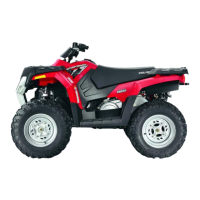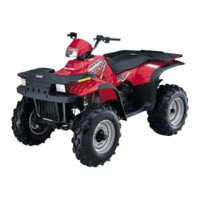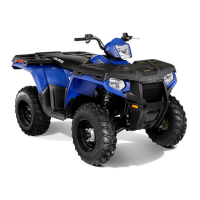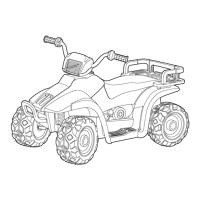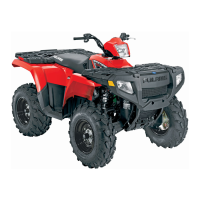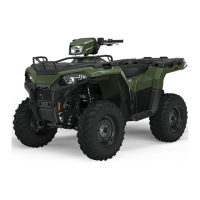ENGINE
3.10
ENGINE INSTALLATION NOTES
After the engine is installed in the frame, review this checklist and perform all steps that apply.
General I tems
1. Install previously removed components using new gaskets, seals, and fasteners where applicable.
2. Perform regular checks on fluid levels, controls, and all important areas on the vehicleas outlinedinthedaily
pre-ride inspection checklist (refer to Chapter 2 or the Owner’s Safety and Maintenance Manual).
PVT System
1. Adjust center distance of drive and driven clutch. (Chapter 6)
2. Adjust clutch offset, alignment, and belt deflection. (Chapter 6)
3. Cleanclutch sheaves thoroughly andinspect inletandoutlet ductsforproperroutingandsealing. (Chapter6)
Transmission
1. Inspect transmission operation and adjust linkage if necessary. Refer to Chapter 2 and Chapter 8.
Exhaust
1. Replace exhaust gaskets. Seal connections with high temp silicone sealant.
2. Check to be sure all springs are in good condition.
Bleed Cooling System
1. Remove radiator cap and slowly add coolant to top of filler neck.
2. Fill coolant reservoir tank to full mark.
3. Install radiator cap and squeeze coolant lines to force air out of system.
4. Again remove radiator cap and slowly add coolant to top of fill neck.
5. Start engine and observe coolant level in the radiator. Allow air to purge and top off as necessary. Reinstall
radiator cap and bring engine to operating temp. Check level in reservoir tank after engine is cool and add
coolant if necessary.
Engine Break In Period
4 Cycle Engine Break-In Period is defined as the first 10 hours of engine operation, or 2 full tanks of fuel.
1. Use only Polaris Premium 4 All Season synthetic oil, or API certified “SH” oil. Never substitute or mix oil
brands. Serious engine damage can result.
2. Use fuel with a minimum octane of 87 (R+M)/2 method.
3. Change break-in oil and filter at 20 hours or 500 miles, whichever comes first.
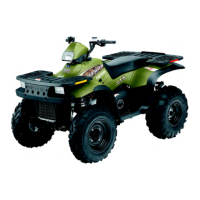
